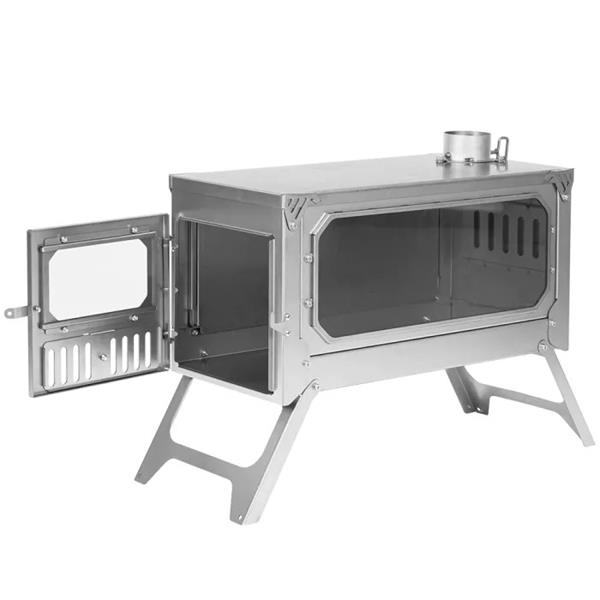I think everyone still doesn’t understand what this “anti-deformation” means, so I would like to share my experience with you based on my several years of titanium stove manufacturing. Hope this helps you.

Shop Now: https://www.pomoly.com/T-BRICK-Ultra
1. Deformation of titanium stove
The deformation of the titanium furnace is based on the concept proposed by the titanium stove after burning (stove with a thickness of less than 1.5mm)
Take the Pomoly Timber series as an example, its material thickness is 0.6mm±0.05. When the stove burns for a long time, the metal will deform due to thermal expansion and contraction. The bottom of the stove will produce a large area of stove warping. (Refers to when we put the top cover or stove bottom on the ground, they will twist like a seesaw) I think users who have used this titanium furnace know this.
2. Overall deformation and local deformation
- Overall deformation: as I said just now, after burning, the whole stove will produce large-area stove warping. This will make the installation of the stove inconvenient after multiple burning, but it can still be used after we install it, and its performance will not be changed, it just takes time to install.
- Local deformation:This phenomenon occurs at the bottom and top of the stove. Even if we add stiffeners to the T1 or T-Brick series, after a long time of combustion, the metal between the welding points of each stiffener will be locally deformed (thermal expansion and cold contraction), which is caused by the metal properties, can not be avoided.
There is no 100% deformation-resistant titanium portable stove in the world unless it is made of thicker material (more than 2mm), but this is contrary to our original intention. Therefore, what we can do is minimize the overall deformation after burning and facilitate re-installation and use. Therefore, local deformation is inevitable, such as the bottom of T1 and the secondary intake side plate of T-brick.
(Good news: the secondary intake side plate of T-brick will be optimized and updated in Feb to further reduce deformation.)
Local deformation will not lead to overall deformation. Take t-brick as an example. The bottom of the t-brick will produce small local bending after combustion, but due to the external stiffeners as reinforcement, the whole bottom plate will not undergo large-area deformation, which is why it can still be assembled quickly after multiple burning.
3. Why not use thicker titanium?
We have also produced 2mm thick stoves. The effect of the whole stove is awesome. The deformation after multiple burning is very small, both global and local deformations are very small. but the weight is over 5kg, twice the current weight, which is a disaster for camping. We need to find a balance between the two, which can minimize the deformation and keep the portability.

4. Why not use harder titanium metal, such as TC4?
TC4 has a stronger hardness, but this metal is difficult to handle and produce. The stove has many continuous 90 degree angles, and TC4 will crack or break during processing.
5. Guy-line fixing
- Since the material of the titanium stove is relatively thin, during burning, the stovetop cover will turn red and the mental strength will be reduced. If the chimney is not fixed, the chimney will sway from side to side, which will cause the top cover of the stove to rise and fall continuously, which will eventually cause the top cover to stove warp.
- Titanium stoves are not as heavy as stainless steel stoves. Due to its heavy weight, the stainless steel stove has a low center of gravity, and it is not easy to fall even if the wind rope is not installed. However, the titanium stove is very light, and when it encounters windy weather, there is a risk of tipping due to its top-heavy weight.
- In addition, if your area is often windy and rainy, I recommend using a non-rolling solid section stovepipe and fixing it with guy-lines, because the metal strength of the rolling stovepipe is weaker than solid section stovepipes, and it will break when it exceeds the limit.Hope my experience can help you. English is not my mother tongue. You can ask me if you can’t understand it.
Read More
